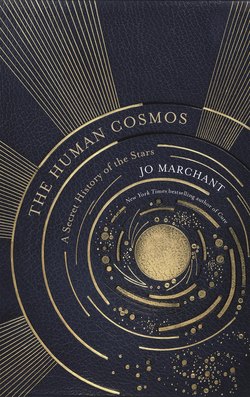Читать книгу The Human Cosmos - Jo Marchant - Страница 13
На сайте Литреса книга снята с продажи.
Оглавление5
TIME
In the archives of Oxford University’s Bodleian Library there’s a small but unusually chubby book. Known simply as ‘MS Ashmole 1796’, it consists of around 200 pages of calfskin bound between leather-covered wooden boards. Written in the fourteenth century, its square black lettering is adorned with painted capitals and interspersed with neat diagrams showing complicated mechanical arrangements of axles and wheels.
The book was bequeathed to the university in the seventeenth century by the collector and astrology enthusiast Elias Ashmole, and lay unstudied for hundreds of years. In 1965, an Oxford astronomy historian named John North finally translated its Latin script, along with a note in the margin, Hic est liber sancti Albani, which translates as ‘This is a book of St Albans’. He realised that hidden among these pages was something special; a description of a spectacular invention to which a monk called Richard of Wallingford, the abbot of St Albans monastery from 1327 to 1335, dedicated much of his life.
The invention was a colossal clock, installed high beneath the great south window of the abbey’s church. But Richard’s construction was no ordinary timekeeper. It was a sophisticated, self-moving model of the cosmos, unlike anything else known when it was built, and so far ahead of its time that when the librarian and antiquities specialist John Leland saw it two centuries later, in 1534, he described it as a marvel still without equal in all of Europe. The clock demonstrated the workings of the universe, Leland said, from the oceans to the heavens: ‘One may observe the course of the sun, the moon, or the fixed stars, or again one may regard the rise and fall of the sea.’
No trace of the clock now remains, and for modern historians reading those words it was hard to know what Leland really saw – until North realised in the Bodleian Library that he was holding Wallingford’s instructions for building this very machine. The secrets he discovered reveal not just an impressive invention, but a crucial moment in human history.
This chapter, then, tells the story of why and how the monks of Medieval Europe chased down time, and how in doing so they transformed humanity. As we’ll see, their efforts to track daily cycles ever more accurately were ultimately successful beyond their wildest dreams. Yet they also destroyed the very thing they pursued. Until this point in history, time was a sign of the divine cosmic order, as shown to us through the cycling motions of the sun, moon and stars. The invention of mechanical clocks unleashed a very different kind of time, powerful enough to weaken our bond with both God and the universe, and set the foundations for a new way of life.
•
